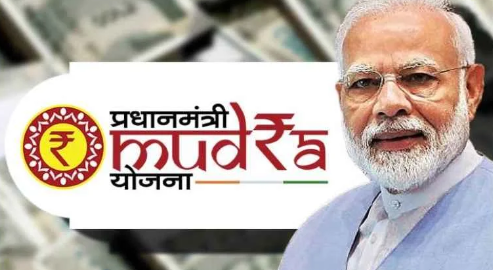The Ease of Financing (GS Paper 3, Economy)

Introduction
- The Pradhan Mantri MUDRA Yojana (PMMY), launched in 2015, represents a significant step towards fostering entrepreneurship and financial inclusion in India.
- By offering collateral-free micro-loans, the scheme aims to empower small and micro-enterprises that traditionally struggle to access formal credit.
- As the scheme evolves, particularly with the recent expansion in loan limits under the Union Budget 2024, it is crucial to assess its successes and address the challenges to enhance its impact.
Overview of the Pradhan Mantri MUDRA Yojana (PMMY)
Objective and Expansion
- Launch and Goal: Introduced by the Narendra Modi government in 2015, PMMY provides collateral-free micro-loans up to ₹10 lakh to support small and micro-enterprises. The recent budgetary increase to ₹20 lakh for the Tarun category is aimed at supporting those who have successfully repaid previous loans.
- Funding and Types: Loans are offered through Member Lending Institutions (MLIs), including Scheduled Commercial Banks (SCBs), Regional Rural Banks (RRBs), Non-Banking Financial Companies (NBFCs), and Micro Finance Institutions (MFIs). The scheme is categorized into three loan products: Shishu (up to ₹50,000), Kishore (₹50,000 to ₹5 lakh), and Tarun (₹5 lakh to ₹10 lakh).
Achievements of MUDRA 1.0
Economic Impact
- Loan Disbursements: Since its inception, MUDRA 1.0 has disbursed over ₹27.75 lakh crore to approximately 47 crore entrepreneurs, significantly impacting grassroots economies.
- Inclusivity: The scheme has been inclusive, with 69% of loan accounts held by women and 51% by SC/ST and OBC entrepreneurs, promoting gender equality and social equity.
- Job Creation: By supporting self-employment and small businesses, MUDRA 1.0 has played a crucial role in job creation, especially in rural and semi-urban areas.
Challenges Faced by MUDRA 1.0
Distribution and Misuse
- Regional Imbalance: The distribution of loans has been uneven, with a concentration in more developed districts. For instance, the top 10 districts received ₹26,000 crore, comparable to the total sanctioned amount for the bottom 318 districts.
- Misuse and Monitoring Issues: Despite a reduction in non-performing assets (NPAs) from 3.61% in FY21 to 2.1% in FY24, issues like misuse of funds and inadequate monitoring persist.
Financial Literacy and NPAs
- Limited Financial Literacy: Many beneficiaries, particularly in the Kishore and Shishu categories, have faced high NPAs due to insufficient financial literacy and business skills. From FY20 to FY22, these categories accounted for over 75% of the scheme’s bad loans.
Expanding MUDRA 2.0: Proposed Enhancements
Focused Outreach and Support
- Empowerment Zones: Establishing outreach and empowerment zones in rural and semi-urban areas is recommended to provide comprehensive support, including financial literacy and business mentorship.
- Financial Literacy Programs: Nationwide programs should cover essential topics like budgeting, savings, credit management, and digital literacy to improve borrower competence and reduce defaults.
Credit Guarantee and Monitoring
- Enhanced Credit Guarantee Scheme (ECGS): Incorporating ECGS into MUDRA 2.0 can reduce lending risks for banks, thereby encouraging more loans to small and micro-enterprises.
- Robust Monitoring and Evaluation Framework (RMEF): Implementing RMEF will ensure transparency, minimize misuse, and improve the scheme’s efficiency by tracking loan disbursements and repayments in real-time. Beneficiary impact assessments will provide valuable insights for policy improvements.
Conclusion
- The Pradhan Mantri MUDRA Yojana has made notable contributions to promoting entrepreneurship and financial inclusion in India.
- However, for MUDRA 2.0 to build on this success, it must address existing challenges related to financial literacy, credit distribution, and monitoring.
- By expanding its scope and implementing comprehensive support systems, MUDRA 2.0 can further empower micro-entrepreneurs and contribute to sustained economic growth.


